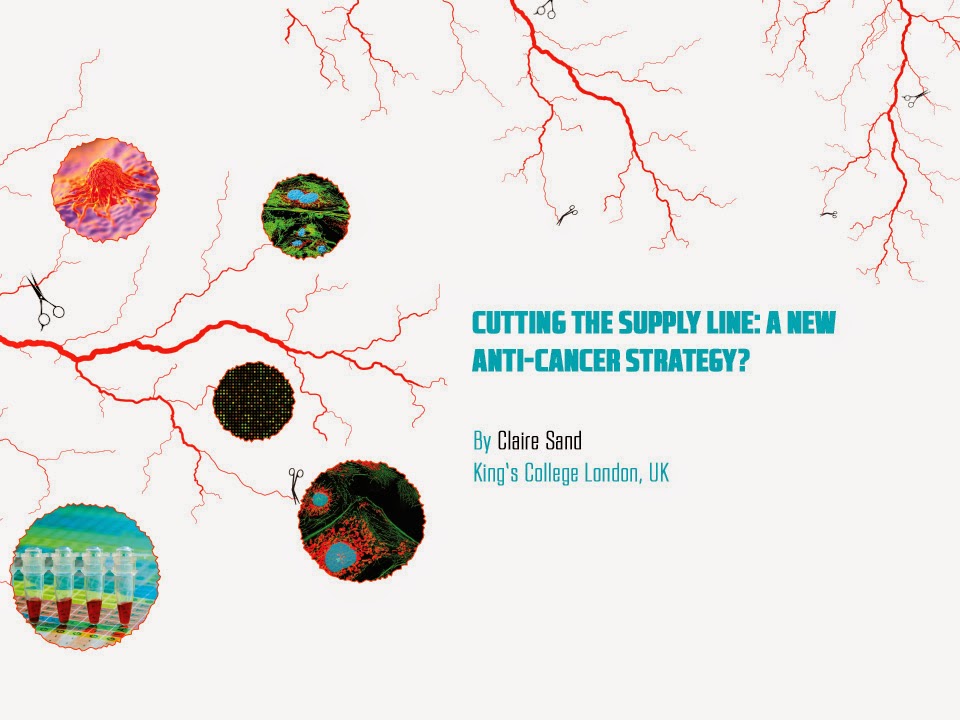Image Source: Serial/Trash
After centuries of endeavour, scientists and doctors have made great strides towards improving cancer treatment. Nonetheless, while conventional therapy has undoubtedly saved innumerable lives, a worrying number of tumours remain inoperable and incurable by chemo- or radiotherapy. Thus, the search for more refined anti-cancer drugs continues, and paving the way is a research team led by Dr Janine Erler, whose recent discoveries raise hopes of a new therapeutic strategy.
What is wrong with current cancer treatment?
There are two principal barriers to effective treatment: firstly, rather than constituting a single disease, cancer actually comprises thousands, each with its own unique aberrations; secondly, cancer occurs when our own cells go awry, making it notoriously difficult to target. Current cancer therapy is like trying to hit a bull’s-eye with a machine gun; even when you hit the target, there is substantial collateral damage, and too often, part of the bull’s-eye remains intact. The goal of cancer research, therefore, is to identify unique aspects of the tumour environment, and develop a ‘silver bullet’ drug to target the tumour more precisely. Accordingly, scientists aim to identify specific ‘weak spots’ in cancerous tumours.
What weak spots have been discovered?
As fast-growing bodies, tumours rely on a large blood supply. To meet this demand, they hijack the body’s own supply line by releasing chemicals that force nearby blood vessels to sprout new offshoots. The main chemical involved is VEGF, and several VEGF-blockers have been developed. Clinical trials of these drugs have been disappointing, however, and there are concerns that blocking all VEGF produced in the body may actually be detrimental in situations where vessel sprouting is essential, such as in wound healing or stroke recovery. To overcome this barrier, Dr Erler’s team have been investigating ways in which we can specifically block VEGF produced by tumours, without interfering in normal and essential vessel growth.
What have Dr Erler’s team found?
In 2011, the group discovered that tumours produce a chemical called LOX, essential for their growth and ability to invade other organs. Because a large blood supply is crucial for tumour growth, they wanted to investigate whether LOX was involved in generating new vessels. In a more recent study, they used cancerous cells genetically engineered to produce either very large or very low quantities of LOX, which they implanted into mice and left to form tumours. Upon dissection, the team noticed that tumours formed from cells with high levels of LOX contained many more new blood vessels than those containing low levels of LOX.
How does LOX cause blood vessel sprouting?
To address this question, the researchers grew the genetically engineered high-LOX and low-LOX cancer cells in flasks. They then removed the liquid in which they were grown, containing all the chemicals released by the cells, and applied it to isolated blood vessel cells. The vessel cells exposed to high-LOX liquid became much more mobile, and spontaneously formed tubes similar to blood vessels. This suggests that the cells grown in high-LOX conditions receive a ‘sprouting signal’ from their environment that is not present in low-LOX conditions.
Because VEGF is key to new vessel formation, the team suspected that LOX may generate high levels of VEGF, which could then act as the ‘sprouting signal’ for vessel cells. Indeed, when they analysed the liquid removed from high-LOX cancer cells, they found it contained very high levels of VEGF, unlike liquid from low-LOX cells. When the high-LOX cells were treated with a LOX-blocking drug, moreover, the levels of VEGF released dropped dramatically.
VEGF. Image Source: Shutterstock. Copyright: molekuul.be
Is this relevant in humans?
To ascertain whether the relationship between LOX and tumour blood supply is also relevant in humans, the researchers obtained colon samples from colorectal cancer patients and healthy volunteers. They found that the cancerous samples contained much higher levels of LOX and VEGF than healthy colons. Interestingly, the levels of both LOX and VEGF were directly proportional to the number of blood vessels present, and importantly, to the severity of the cancer. Most excitingly, they observed an identical pattern in breast cancer samples, suggesting that LOX may be important in many different types of tumour.
What does this mean for new cancer treatments?
Based on Dr Erler’s research, it is clear that LOX-blocking drugs could theoretically stop the growth and spread of several different types of cancer. That they are capable of eliminating tumours seems unlikely. Nonetheless, a significant benefit of such drugs is their potential use as intervention-sparing agents. Restricting tumour size and spread would undoubtedly facilitate surgical removal, and could reduce the need for chemo- and radiotherapy – notorious for their toxic side effects. While anti-LOX drugs may not be a ‘silver bullet’ cure exactly, they could well refine current treatment strategies, and improve the quality of life of millions of cancer sufferers worldwide.
This summary by Claire Sand was shortlisted for Access to Understanding 2014 and was commended by the judges. It describes research published in the following article, selected for inclusion in the competition by Breakthrough Breast Cancer:
PMCID: PMC3548904
A.M. Baker, D. Bird, J.C. Welti, M. Gourlaouen, G. Lang, G.I. Murray, A.R. Reynolds, T.R. Cox & J.T. Erler.
Cancer Research (2013) 73(2), 583-594.
Access to Understanding entrants are asked to write a plain English summary of a research article. For Access to Understanding 2014 there were 10 articles to choose from, selected by the Europe PMC funders. The articles are all available from Europe PMC, are free to read and download, and were supported by one or more of the Europe PMC funders.
Look out here and on Twitter @EuropePMC_news for further competition news and other Europe PMC announcements.

